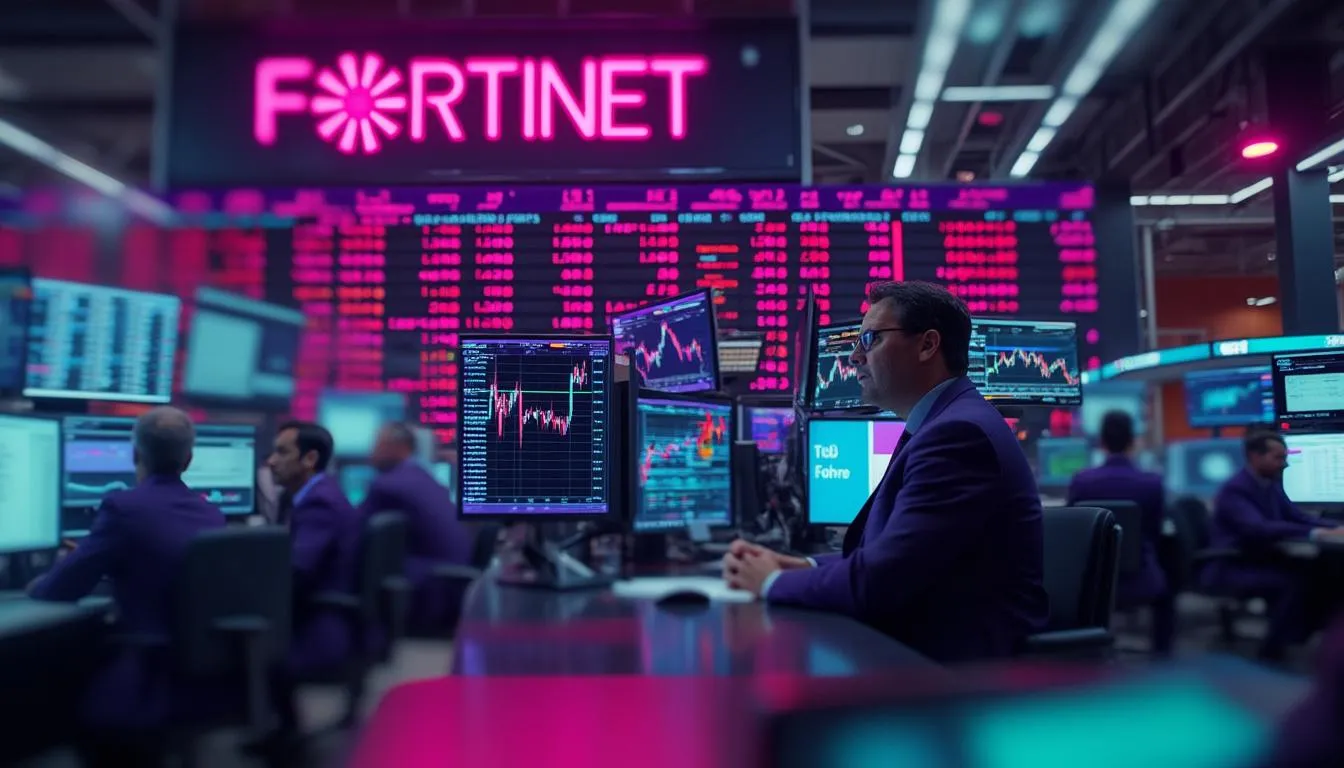Morgan Stanley's Move Signals a Cautious Shift for Cybersecurity Leader
In a dramatic turn for cybersecurity bellwether Fortinet, Inc. (FTNT), Morgan Stanley has downgraded the stock from "Overweight" to "Equal Weight" and set a new price target of $78. This follows a brutal 20% single-day drop despite an earnings beat, raising probing questions about the sustainability of Fortinet’s growth and the broader outlook for network security spending. Analyst downgrades, especially from firms with Morgan Stanley’s cachet, often serve as early warning signals for institutional investors, prompting a closer inspection of underlying fundamentals and sector dynamics.
Key Takeaways
Potential Upside Minimal: With Fortinet’s current price at $75.31 and Morgan Stanley's target at $78, the implied upside is just about 3.6%—well below historical expectations for high-growth tech stocks.
Stock Plunged 20% on Earnings: The dramatic post-earnings sell-off has pushed shares to their lowest levels in a year, even though results beat analyst forecasts.
Mixed Sentiment Despite Positive Results: News coverage notes that while Fortinet outperformed on earnings, its forward guidance and firewall product outlook have caused concern.
Morgan Stanley’s Downgrade Carries Weight: As a top-tier global investment bank, their move reflects sector caution and is likely to influence both institutional sentiment and peer analyst coverage.
Downgrade in Context: Morgan Stanley's View and Its Influence
The Analyst Call
Morgan Stanley, a global powerhouse in investment research and capital markets, shifted its view on Fortinet from "Overweight"—a bullish stance implying the stock should outperform peers—to "Equal Weight," signaling an expectation of merely average performance relative to the sector. The new $78 price target is a significant recalibration, offering only a marginal 3.6% upside from recent trading levels. Morgan Stanley’s broad sector coverage and reputation for deep diligence mean this call will not go unnoticed. Their expertise in technology and cybersecurity equities adds further gravity, especially when a downgrade follows a major price dislocation.
"Morgan Stanley's downgrade reflects a prudent, data-driven response to sector headwinds and shifting risk-reward dynamics." Deepstreet
Their move aligns with a growing concern among major analysts that the firewall upgrade cycle—a key Fortinet growth driver—may be slowing as enterprise IT buyers delay or scale back purchases. This is highlighted in Barron's recent coverage, which notes investor apprehension over the company’s forward-looking statements despite a headline earnings beat.
Fortinet’s Stock and Financial Performance: A Volatile Year
One-Year Price and Volume Trends
Over the past 12 months, Fortinet’s shares have experienced significant volatility:
52-Week Range: From a high of $114.82 (Feb 2025) to a low of $69.40 (Aug 2024), with the current price near $75.31.
Recent Sentiment: The sentiment ratio stands at 0.56, indicating more up days than down but with increasing volatility lately.
Technical Signals: The 20-day EMA sits at $99.09, well above the current price, signaling a sharp break from recent trends. The relative strength index (RSI) has plunged to just 9.36—a level often associated with extreme oversold conditions.
Volume Spike: The stock saw its highest trading volume of 17 million shares in late May, but the recent sell-off has renewed heavy trading.
Financial Health and Growth Trajectory
Fortinet has consistently delivered robust revenue and earnings growth, marking it as a standout in network security. Still, the recent guidance raises questions:
Earnings Beat: Last quarter, Fortinet topped consensus EPS and revenue estimates.
Forward Guidance Trimmed: Management’s guidance for Q3 revenue came in marginally below Wall Street’s expectations, with particular caution around firewall and hardware spending.
Balance Sheet Strength: The company maintains a healthy cash position, low debt, and strong free cash flow, supporting ongoing R&D and buybacks.
Interpreting the Downgrade: Why Now?
Sector Risks and Company-Specific Challenges
Morgan Stanley’s change in stance comes as sentiment shifts across cybersecurity:
Firewall Product Cycle Maturing: The core firewall business is seeing slower growth as customers hold off on upgrades amid macro uncertainty.
Competitive Pressures: Fortinet faces intensifying competition from both legacy and next-gen vendors, squeezing margins and complicating pricing power.
Mixed News Cycle: Although the company beat on earnings, news sources like Forbes question the severity of the stock’s decline relative to fundamentals, suggesting investor fears may be overblown—but also that expectations for breakout growth are being reset.
Recent News Insights
Barron's (Aug 7, 2025): “Investors focused on the outlook for upgrades of firewall products.”
Forbes (Aug 7, 2025): “Although the company’s third-quarter revenue guidance was marginally lower than expected, the drastic sell-off appears excessive.”
Benzinga (Aug 7, 2025): “U.S. stock futures were higher this morning, with Fortinet among the biggest pre-market decliners.”
What Now for Investors? Marginal Upside, Elevated Risk
The Numbers: Potential Return
With the new price target just 3.6% above the current price, the near-term risk/reward profile is not compelling for growth-oriented investors. The sharp decline has brought valuation multiples back to more reasonable levels, but the downgrade signals caution that further downside cannot be ruled out if macro or sector headwinds persist.
Technicals: Oversold, But Not Yet a Buy Signal
The current RSI below 10 is exceptionally oversold, and some technical traders may view this as a contrarian opportunity. However, with Morgan Stanley’s downgrade and a tepid price target, the risk of a protracted recovery remains elevated.
Bottom Line: A Stock in Transition
Fortinet remains a cybersecurity leader with strong long-term prospects, but the path forward is clouded by sector-wide uncertainty and a maturing core business. The Morgan Stanley downgrade—backed by the firm’s deep sector expertise and powerful influence—adds weight to the argument for patience.
Investors should closely monitor forthcoming earnings guidance and sector trends, as further clarity on enterprise IT spending and competitive positioning will be key. For now, the muted upside and heightened volatility may warrant a wait-and-see approach.

.svg)
.svg)
.svg)
.svg)

.svg)

.svg)
















